Ask a question, get an answer ASAP!
GET A QUOTE
Tire Patch Cost
Service Location
Price range for all vehicles
(171,627)At some point in your driving career you may walk up to your vehicle and notice the ominous glint of a nail head in the tread of your tire. It’s an uneasy feeling when you have to drive with a nail in your tire. What do you do about it? Do you need to have it fixed right away? Is the tire even leaking?
Just because you have a nail in your tire doesn’t mean you'll have a flat tire. In some cases, the nail can be short enough that it doesn’t even penetrate through the tire’s airtight lining. In other cases, it’s trajectory may have missed the lining altogether. Or if the nail did puncture right through the liner, it may be sealed or nearly completely sealed around the offending nail.
Here’s what you should do:
Always keep a tire pressure gauge in your vehicle. You should check your tire pressure every other time you fill your fuel tank. If the tire is significantly lower on pressure than it should be, put your spare tire on, or have a mechanic do it for you, and have the tire with the nail in it professionally repaired or replaced as soon as possible. If the air pressure is only slightly low, top it up and bring your vehicle to a tire repair shop to have it fixed properly.
An often overlooked aspect of tire repair has to do with the steel belts inside the tire’s layers. When the tire is punctured, water, snow, and moisture can eat away at the steel belts and cause corrosion. This can compromise your tire and the belt might end up letting go and cause the tire to shimmy. Have the puncture hole repaired using a combination plug and patch, which is the only approved method of tire repair.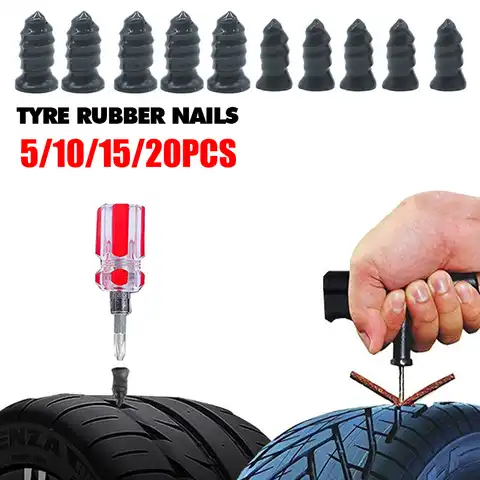
Unfortunately, there are areas of the tire that cannot be repaired, such as the shoulder and the sidewall. In both of these locations, there is too much flex and movement and a plug-patch will not hold. Also, if the puncture is in the tread but the hole is larger than a quarter inch, it cannot be repaired safely. Whether due to location or size, there are times that a tire repair is not possible and the tire must be replaced entirely.
Don’t take a chance driving with a nail in your tire. Have a professional inspect and repair your tire as soon as you can.
The most popular service booked by readers of this article is Tire Patch. YourMechanic’s technicians bring the dealership to you by performing this job at your home or office 7-days a week between 7AM-9PM. We currently cover over 2,000 cities and have 100k+ 5-star reviews... LEARN MORE
SEE PRICING & SCHEDULING
Tires
Tire Pressure
Puncture
Spare Tire
The statements expressed above are only for informational purposes and should be independently verified.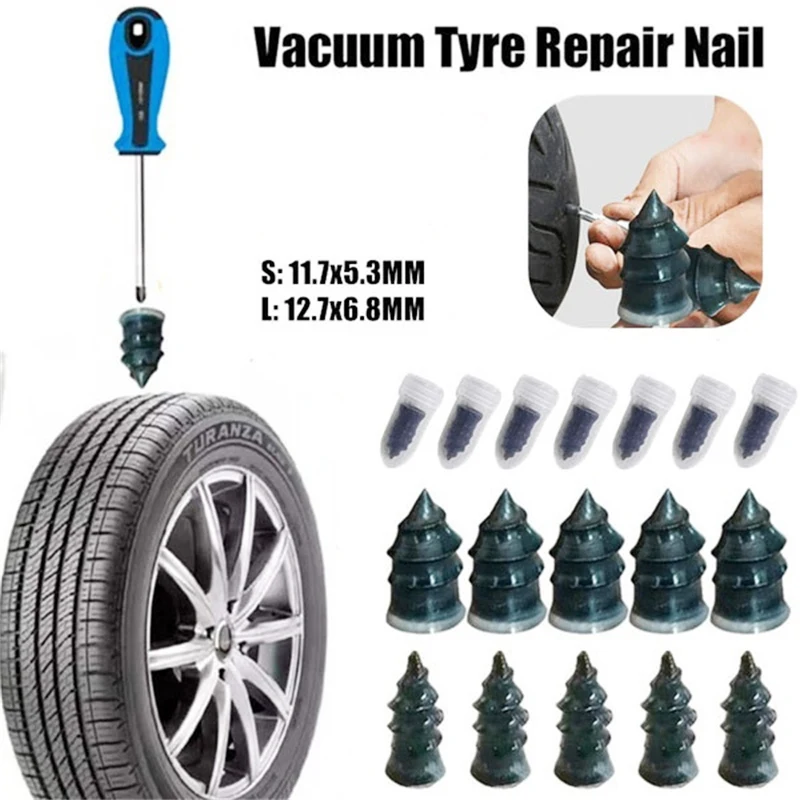 Please see our terms of service for more details
Please see our terms of service for more details
4.2 Average Rating
Service Hours
7 AM - 9 PM
7 days a week
Phone Number
1 (855) 347-2779
Phone Hours
Mon - Fri / 6 AM - 5 PM PST
Sat - Sun / 7 AM - 4 PM PST
Address
We come to you at no extra charge
Guarantee
12-month/12,000-mile warranty
Our certified mobile mechanics perform over 600 services, including diagnostics, brakes, oil changes, scheduled mileage maintenances, and will come to you with all necessary parts and tools.
Get a fair & transparent quote instantly before booking.
(
171,627
)
161,099
161,099
SEE REVIEWS NEAR ME
21 years of experience
237 reviews
Request Richard
Richard
21 years of experience
Request Richard
by Kenneth
Acura RSX L4-2. 0L - Window is not working - Bonita Springs, Florida
0L - Window is not working - Bonita Springs, Florida
Great and fast service!
by Robert
Honda Civic - Camshaft Position Sensor Replacement - Fort Myers, Florida
On time and very professional and helpful
22 years of experience
2223 reviews
Request Chris
Chris
22 years of experience
Request Chris
by Gary
Jeep Grand Cherokee V6-3.7L - Oil Change - Lake Elsinore, California
On time. Excellent service as usual.
by Theodore
Volvo V40 - Starter - Irvine, California
As always, Chris did an excellent job.
21 years of experience
1068 reviews
Request Pardeep
Pardeep
21 years of experience
Request Pardeep
by Ellen
Hyundai Santa Fe V6-2.7L - Tire Patch - San Jose, California
Very quick and efficiento
8 years of experience
23 reviews
Request Nestor
Nestor
8 years of experience
Request Nestor
by Denice
Hyundai Santa Fe V6-2.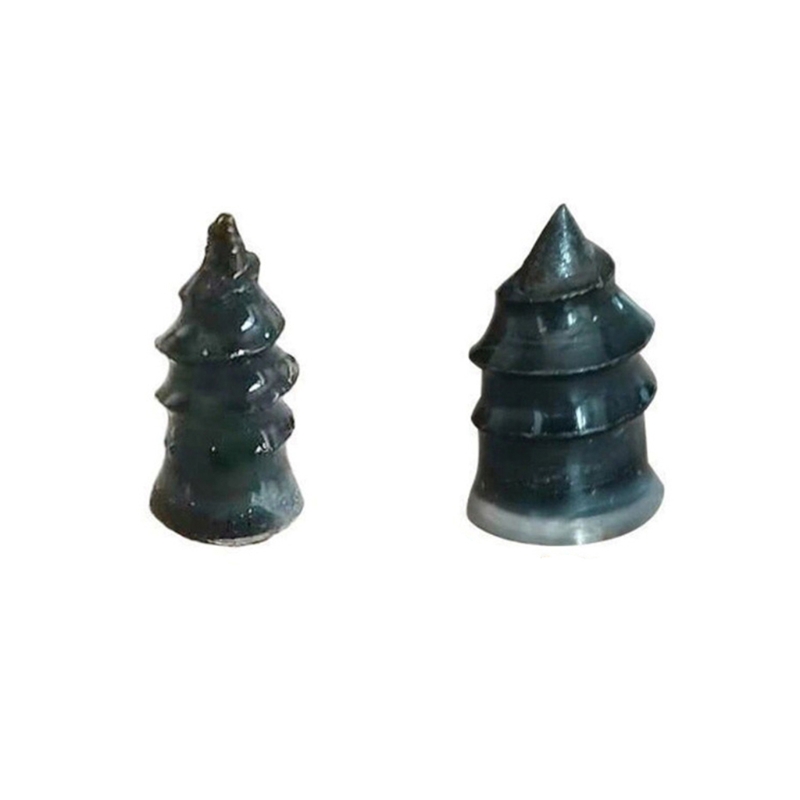 7L - Tire Patch (Driver Side Front) - Boise, Idaho
7L - Tire Patch (Driver Side Front) - Boise, Idaho
Right on time, very knowledgeable and helpful on what needs to be done next. Thanks!
Our certified mobile mechanics make house calls in over 2,000 U.S. cities. Fast, free online quotes for your car repair.
GET A QUOTE
GET A QUOTE
How to Know What Tires to Buy
Your Your vehicle requires traction in order to accelerate, brake efficiently, and maintain control when you are steering. In order to do those things well, you need to own good tires on your vehicle. There are hundreds of different tire...
A Guide to Tire Safety
When When sitting behind the wheel of a car, there are two things that most drivers want: to reach their destination, and to do so as safely as possible. This means having a car that is in good condition, and. ..
..
How to Handle a Burst Tire
Tires burst when the tire pressure is too low or too high, there is a mechanical defect in the tire itself, or a foreign object damages the tire.
What do the service codes displayed in the Maintenance Minder™ mean?
While your Maintenance Minder™ is primarily designed to let you know when it’s time for your next oil change, it also displays codes for other needed services based on vehicle mileage. There are several different codes that can be displayed,...
P0755 & P0700 error codes
The problem with buying used tires and not having them balanced is the potential problems they can cause. Most transmissions - or more specifically, the Powertrain Control Module (PCM) which controls the transmission and drive line - contain incredibly tight...
Hi i have a 2009 dodge journey and it drives great but if you get over 70mph it starts pulsating.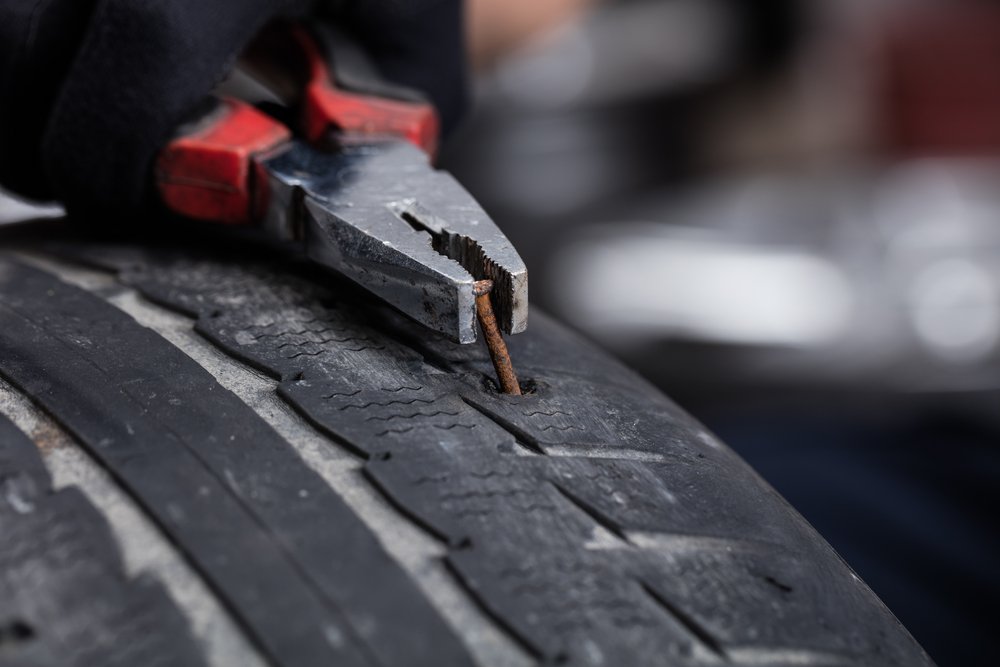 What could that be?
What could that be?
Hello, thank you for writing in. 85% of the time, when you have issues driving at high speeds, specially when you can feel them and hear them, you have an issue with your tires. The best place to start is...
Estimates
Cities
Services
Our service team is available 7 days a week, Monday - Friday from 6 AM to 5 PM PST, Saturday - Sunday 7 AM - 4 PM PST.
1 (855) 347-2779 · [email protected]
Read FAQ
GET A QUOTE
By John Goreham G+ Jun 29 2020 - 11:03am
Many vehicle owners feel frustrated when they have a nail in the tire and are told by a tire shop that the tire cannot be repaired. Here are a few common reasons why it can’t be fixed.
Advertisement
You just either rolled up to a tire shop on a flat, were towed in, or drove in with your spare on the car and the flat in the trunk. You have important things to do today, and since you can clearly see there is a nail in the tread, you expect to be told that the nail can be pulled out and the tire fixed quickly. However, after a quick glance, the tire shop says, “No can do, Bubba.” They are not just trying to sell you a new tire. There are real reasons why many flats cannot simply be patched.
However, after a quick glance, the tire shop says, “No can do, Bubba.” They are not just trying to sell you a new tire. There are real reasons why many flats cannot simply be patched.
Reason 1 Why Your Tire Cannot Be Repaired – You Drove On The Flat
Modern tires have an inner structure of the sidewall that is not designed to support your vehicle when uninflated. You can usually get away with a flat tire rolling without air for a short distance – think yards, not miles. However, if you just drove 10 minutes on the flat, you destroyed that important sidewall structure and the tire cannot be repaired.
Related Story: Tire Shortages and Delays: Not Just For Tesla Owners Anymore
Reason 2 Why Your Tire Cannot Be Repaired – Your Puncture Is In The No Repair Zone
Modern tires also need to be puncture-free along the sides and in from the sides about 20% on both sides of the tire. If your puncture is near the sidewall you are out of luck. Tire shops need to keep customers safe, and they follow the standard industry guidelines and will not repair a puncture too close to either sidewall. They should err on the side of caution to protect your safety and protect themselves from liabiility. Most do.
Tire shops need to keep customers safe, and they follow the standard industry guidelines and will not repair a puncture too close to either sidewall. They should err on the side of caution to protect your safety and protect themselves from liabiility. Most do.
Reason 3 Why Your Tire Cannot Be Repaired – Your Tire Has Other Issues
If you have a bubble, a tear, or a big honking carbuncle on the side of your tire, it is unrepairable. Even if that is NOT why your tire went flat. If you have any area of the tire worn beyond the tread wear indicators, your tire is not repairable. If your tire is older than the internet, your tire is not repairable. If your tire is unevenly worn and any of the metal parts inside are visible your tire is not repairable. We can keep going. Basically, if your tire was not safe before the puncture, your tire shop would be crazy to try to repair the puncture. According to NHTSA, hundreds of people are killed each year due to tire failure. Your tire shop does not want you to be killed due to tire failure with the receipt for the repair sitting in the cupholder.
Your tire shop does not want you to be killed due to tire failure with the receipt for the repair sitting in the cupholder.
Reason 4 Your Tire Cannot Be Repaired - You Have Run Flat Tires
Many shops will not repair a run-flat tire that has had a puncture. Although run-flats are designed to get you to a shop or home when you have a puncture, they may not have been designed to then be repaired and continue in service after having been driven when deflated. This is one reason we give run-flat tires like those on BMW vehicles a thumbs-down.
Reason 5 Your Tire Cannot Be Repaired - The Puncture Is Too Large
If the puncture in your tire isn't just a normal nail or screw, but rather a chunk of metal, your repair shop will tell you to buy a new tire. Sometimes the metal bruises or gouges the tire either inside or outside and the plug and patch method of repair is simply not safe to perform.
Reason 6 Why Your Tire Cannot be Repaired - It Was Struck By A Meteorite
We recently had a puncture that we surmised was a meteorite strike.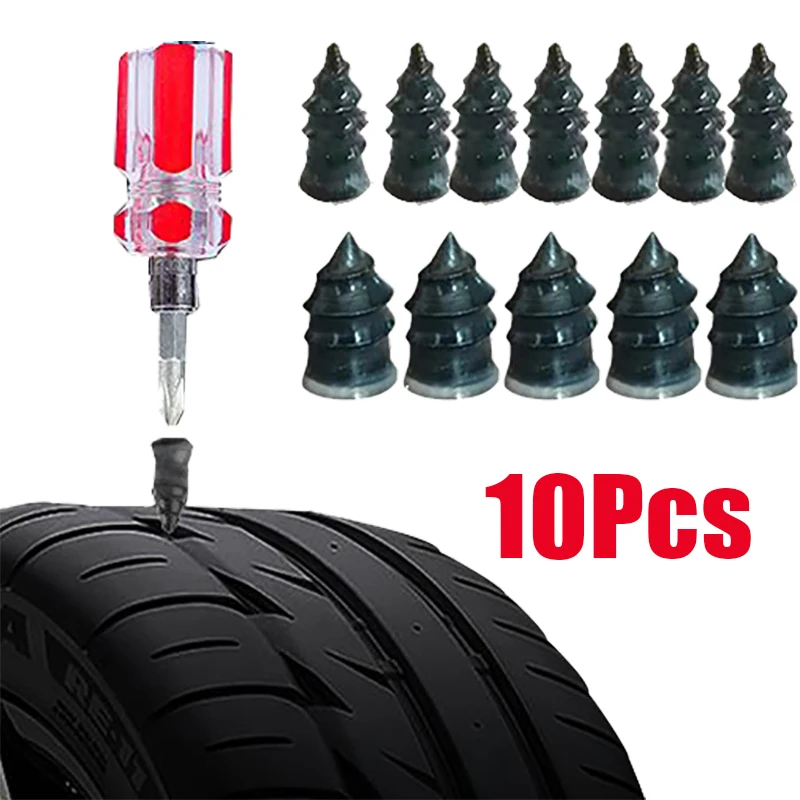 Yes, it sounds crazy, but read our story and tell us if you have a better guess.
Yes, it sounds crazy, but read our story and tell us if you have a better guess.
Take care of your tires and they will take care of you. If you have a tire-repair story to tell, feel free to offer it up in the comments below.
John Goreham is a life-long car nut and recovering engineer. John's focus areas are technology, safety, and green vehicles. In the 1990s, he was part of a team that built a solar-electric vehicle from scratch. His was the role of battery thermal control designer. For 20 years he applied his engineering and sales talents in the high tech world and published numerous articles in technical journals such as Chemical Processing Magazine. In 2008 he retired from that career to chase his dream of being an auto writer. In addition to Torque News, John's work has appeared in print in dozens of American newspapers and he provides reviews to many vehicle shopping sites. You can follow John on Twitter, and view his credentials at Linkedin
Images by John Goreham. Use with permission only.
Use with permission only.
Automotive News
News Opinion
Toyota News, Pricing and Reviews
Follow Torque News on YouTube, Twitter and Facebook.
Tesla Is Rumored To Offer New Affordable Wall Connectors
Tesla's New V4 Supercharger is Twice More Powerful
More Recent Videos
A tire is a round piece of rubber that is the main part of a car's wheel, allowing it to move. The tire also provides traction and shock absorption while driving. Over time, stones get stuck in the tires. How to remove them, we have already told you in one of the previous articles. But stones are not the only enemies of tires. There are also nails, self-tapping screws and many other sharp objects that can easily pierce a car tire. If, having caught a self-tapping screw, a flat tire, it is clear to everyone what to do. But what if the pressure continues to hold in a punctured wheel? Can I keep driving, and if so, for how long?
The tire also provides traction and shock absorption while driving. Over time, stones get stuck in the tires. How to remove them, we have already told you in one of the previous articles. But stones are not the only enemies of tires. There are also nails, self-tapping screws and many other sharp objects that can easily pierce a car tire. If, having caught a self-tapping screw, a flat tire, it is clear to everyone what to do. But what if the pressure continues to hold in a punctured wheel? Can I keep driving, and if so, for how long?
See also: Is it safe to drive with a screw in a tire?
So, if you happen to know that a nail (or self-tapping screw) is stuck in the wheel of your car, but the tire is still holding pressure or deflating slowly, then in no case try to pull the nail out. Leave it in the cover. Next, check the pressure in the wheel and, if it does not correspond to the one recommended by the automaker, inflate the wheel to the norm.
Otherwise, pulling out the nail that prevents the pressure from escaping from the tire will bring the tire to zero.
There is, of course, another option - to deflate the tire, pull out the nail, take a tire repair kit and repair the puncture yourself, and then re-inflate the wheel. But, unfortunately, not every motorist has such a repair kit, and not everyone will be able to repair the wheel on their own. In fact, in order to install a tourniquet into a puncture, remarkable strength is needed.
Unfortunately, a wheel puncture with a nail or a self-tapping screw happens quite often on our roads. Many punctures do not cause the tire to flatten almost immediately. As a result, many drivers notice that the wheel caught the self-tapping screw, not immediately. True, if your car is equipped with tire pressure sensors or a wheel rotation monitoring system (the system tells the driver about a sharp change in wheel rotation parameters, which usually occur when the pressure in the wheel changes sharply), then the security system will inform you of a possible problem in wheel.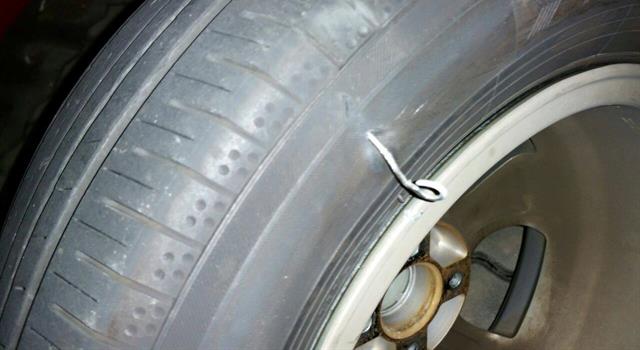
If there are tire pressure sensors, you will be able to know which wheel has changed pressure. Unfortunately, very often this system gives false warnings (for example, when there is a sudden change in road grip or a sudden change in temperature outside). As a result, over time, many drivers stop paying attention to the warning of the tire pressure monitoring system. But in vain. After all, the system can warn of a broken wheel.
To prevent this from happening, carefully inspect the wheels for punctures after each ride. If a self-tapping screw is found, contact the tire service as soon as possible.
This is another question that is often asked by car enthusiasts on various thematic forums. We want to upset car owners right away. If you have a punctured wheel, in principle, you can not ride. After all, a car is not a toy, but a vehicle of increased danger. And not only for you and your passengers, but also for other road users. Therefore, you should contact the tire service as soon as possible, even if the punctured tire does not flatten. You are not clairvoyant and cannot know at what point the wheel will instantly lose pressure. Can you imagine what will happen if this happens at speed while driving on a motorway?
And not only for you and your passengers, but also for other road users. Therefore, you should contact the tire service as soon as possible, even if the punctured tire does not flatten. You are not clairvoyant and cannot know at what point the wheel will instantly lose pressure. Can you imagine what will happen if this happens at speed while driving on a motorway?
As we have already said, it is NOT possible to drive with a flat tire. Is it dangerous. But we understand that not everyone has a spare wheel or tire repair kit in their car. Of course, if the tire is slowly losing pressure, you can continue driving by pumping up the tire first. But you don't have to drive fast. First, it's dangerous. And secondly, the faster you drive, the faster the damaged tire will bleed air.
See also: That's why big wheels hurt modern cars
If it is far from the tire fitting, then every 2-3 km stop and check the pressure in the wheel. Inflate the wheel if necessary. Otherwise, you run the risk of accelerating the wear of the tread, which quickly becomes unusable if there is insufficient pressure in the wheel.
Inflate the wheel if necessary. Otherwise, you run the risk of accelerating the wear of the tread, which quickly becomes unusable if there is insufficient pressure in the wheel.
It is worth noting that there are cases when the self-tapping screw does not completely penetrate the rubber, as a result of which, even if it is pulled out, air will not leak. But this, as a rule, applies to small screws and nails. Unfortunately, motorists do not always have the opportunity to assess how deeply the tire was damaged.
Photo: Mikhail Tereshchenko / TASS
adv.rbc.ru
See also
Nail, rebar or sharp stone - sometimes you can damage a tire almost from scratch. First of all, the scale of damage is important, and often rubber can still be repaired. Most often, motorists turn to tire shops for repairs in the middle of autumn or spring - just in the season of replacing summer tires with winter tires and vice versa.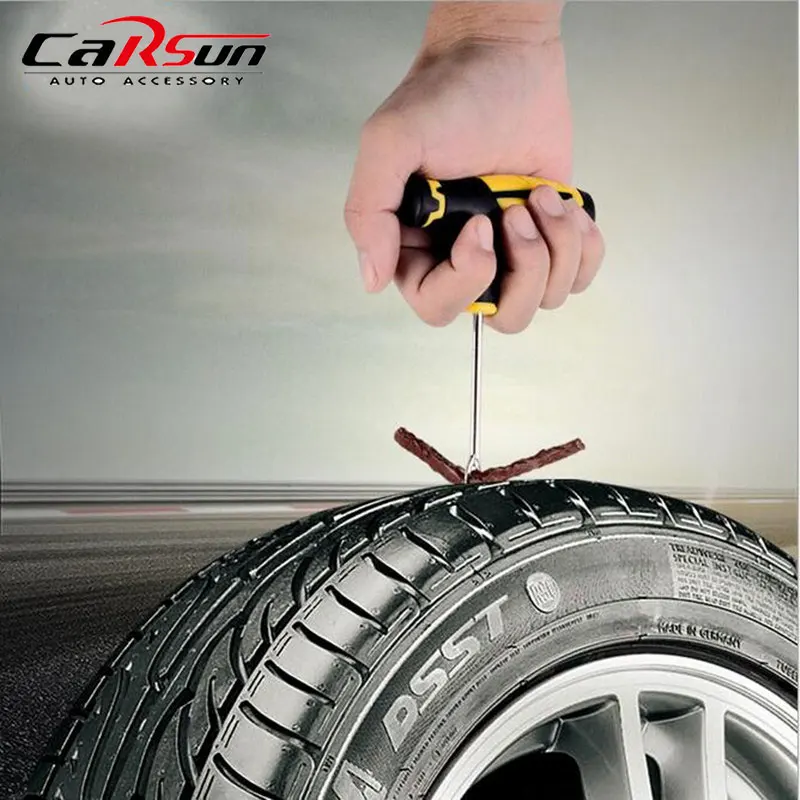 In order not to stand in lines, it is worth knowing exactly when to go to the tire shop and when to go to the store.
In order not to stand in lines, it is worth knowing exactly when to go to the tire shop and when to go to the store.
The most common "injury" to rubber is a puncture, and it can most often be repaired. Professionals in the nearest service will do it much faster, and your hands will remain clean. But if the puncture caught you in a deserted place, and there is a pump and a tire repair kit with harnesses in the trunk, you can patch up the tire yourself. Most often, when repairing the front tires, the wheel can not even be removed, it is enough to turn the steering wheel in the right direction and find the puncture site.
First, the hole is cleaned with a helical awl, the repair harness is smeared with glue and tucked into the eye of the awl, after which it is inserted into the tire hole. With a sharp movement, the tool is removed, and the tourniquet remains inside and securely clogs the hole. The tails are cut with a knife, but it is recommended to leave about 20 mm. After that, the tire can be inflated and the pressure checked.
Repair with tourniquets is not considered long-term, because after some time they dry out and begin to let air through. A more advanced puncture repair method is vulcanization. The hole is sealed with an elastic patch, and the funnel at the puncture site is filled with a special compound. A vulcanizer is put on top, which heats the patch and solders the excess.
Under service conditions, the puncture is also repaired with cord fungi. The puncture site is processed and drilled to roughen. Everything is smeared with glue, after which a fungus is introduced from the inside of the tire, its cap is rolled, and the excess legs are cut off from the outside.
Photo: PA Images / TASS
A puncture can also be repaired with sealant. Many car manufacturers with run flat tubeless tires put compressor repair kits in the car instead of a spare tire - a bottle of pressurized sealant. The car is raised on a jack, after which the sealant is pumped into the damaged wheel through the nipple. Next, you need to spin the wheel and pump it up. After repair, the car should be driven a couple of hundred meters to check the tightness of the tire. If it has not recovered, the procedure is repeated.
Next, you need to spin the wheel and pump it up. After repair, the car should be driven a couple of hundred meters to check the tightness of the tire. If it has not recovered, the procedure is repeated.
It happens that a self-tapping screw or a nail closes the hole in the tire, remaining inside. Do not rush to pull it out - until the pressure drops, you can safely get to the service for vulcanization. Sometimes the wheel begins to blow off a few weeks after the self-tapping screw got into it. Therefore, it is better to check tire pressure periodically, and if the pressure sensor lights up, you should at least visually inspect the tire for a nail head.
A bump or bulge most often appears on the side of a tire after hitting an obstacle or hitting a hole at speed. From the impact, the sidewall carcass threads are damaged, the tire ceases to hold the load and pressure, swelling appears. Any small bump eventually turns into a larger one, and with such a defect, the wheel can burst at any time.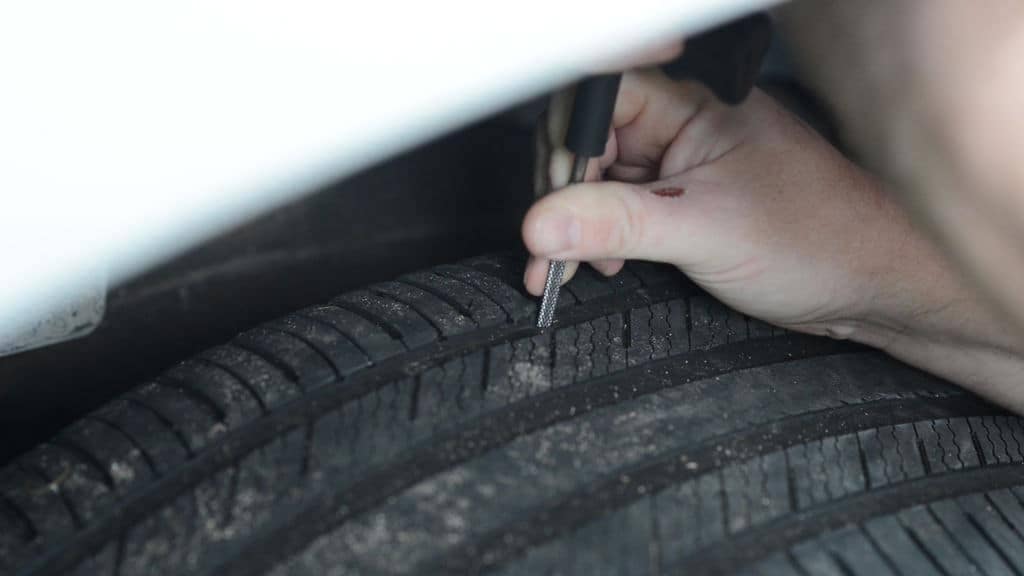 This is a direct safety hazard because a sudden flat tire can cause loss of control and a road accident.
This is a direct safety hazard because a sudden flat tire can cause loss of control and a road accident.
Some bulges can be repaired, but no patch will ever restore a tire to factory stiffness. The ideal option in this case is to replace the tire. If a hernia has appeared on the tread, then you can extend the life of the tire with the help of cord patches - ready-to-use patches with an adhesive layer. But if swelling is found on the sidewall, the likelihood of repair is minimal, the wheel is easier to change. Blisters on low profile tires are generally not repairable.
Only car service professionals can repair a side cut. Cord patches will be needed to repair the damage, but after some time the wheel will still have to be changed. This method will work only if the gap is not in the shoulder area of the tire, then no one will repair it.
In general, cuts or punctures, unlike punctures, are considered non-repairable, since the integrity of the frame is violated.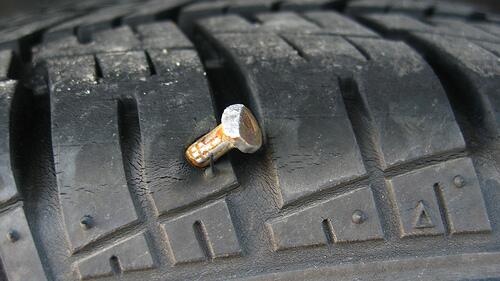 And breakdowns do occur on the go, when the tire abruptly loses pressure and has time to make only a few turns “on the rims” before it comes to a complete stop. In this situation, the cord breaks and the layers of the tire are destroyed. Even if it is possible to close the hole, it is not recommended to use such a weakened tire.
And breakdowns do occur on the go, when the tire abruptly loses pressure and has time to make only a few turns “on the rims” before it comes to a complete stop. In this situation, the cord breaks and the layers of the tire are destroyed. Even if it is possible to close the hole, it is not recommended to use such a weakened tire.
Photo: Mikhail Pletsky / Russian Look
Cracks, sidewall abrasions and unprofessional tire fitting can also lead to tire problems. Cracks can occur as a result of improper storage of tires. Their danger is that moisture begins to flow to the cord, and this already renders the frame unusable. Air can also escape through cracks. Cracks cannot be repaired and tires will not last long. A tire with cracks is deformed, blistered, and may even break while driving.
Rubbing against curbs or driving on uneven roadsides can damage the tire sidewall. When driving like this, it is worth inspecting the tires for damage regularly. If a slight wear is found, the wheels can be swapped, which will slightly extend their service life and allow you to delay the purchase of new ones.